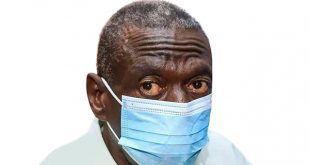
By Flavia Nassaka
Progress made on immunisation but maternal, child health lagging
Starting next year, the Ministry of Health is to introduce a new polio vaccine for children, according to the Uganda National Expanded Programme on Immunisation (UNEPI) Programme Director, Dr Robert Mayanja.
Dr Mayanja was speaking to The Independent about a new report; `Vaccination coverage in Uganda’ when he revealed the new plans.
He said children will be receiving the polio vaccine inform of an injection other than the oral vaccination which has had adverse effects on children with weak immune systems.
He said the oral vaccine introduced in the 1980s has been found to expose children with weak immunities to Vaccine- derived Polio rather than protecting them.
“The new injectable vaccine called Inactivated Polio Vaccine (IPV) consists of inactivated polio virus strains so its use reduces the risk of paralysis involved with use of live strains contained in the oral vaccine,” he said.
Dr Mayanja said the move is in an effort to sustain this progress made to achieve the target of 100% coverage of immunisation services.
The World Health Organisation has set 2018 as a target for achieving 100% coverage of immunisation services but an estimated 21.8 million infants worldwide are still not being reached by routine immunisation services. Most of these children are from developing countries.
Uganda is on track to achieve the target, according to a report released by the Ministry of Health.
The report titled `Annual Health Sector Performance 2013/14’ says the country has sustained high levels of immunisation coverage. The percentage vaccination coverage in 2013 for DPT3, OPV3, Measles, and Tetanus in pregnant women was 97%, 100%, 97% and 56% respectively.
The percentage of children less than one year immunised against diphtheria, tetanus, whooping cough, hepatitis B and influenza type B now stands at 93% from 87% in 2012/2013.
Dr Mayanja said they have improved coverage by making available from the lower Health Center IIIs up to referral hospitals.
Regarding maternal and child health, the report indicates that virtually all pregnant women attend antenatal care at least once (95%) but only 31% attended four visits as recommended. This is below the 55% target set by Health Sector Strategic and Investment Plan (HSSIP) by 2015. Also, deliveries in health facilities achieved 44 % instead of 65%. Maternal deaths were reported in 78 hospitals, a total of 449 deaths were recorded giving an average of 5.8 deaths per hospital.
Maternal mortality, therefore, remains at 438 per 100,000 live births.
Whereas infant mortality rate remains at 54 per 1000 live births and the under-five mortality rate at 90 per 1000 live births, the HSSIP target for 2015 is 41 per 1000 live births while the under-five mortality target is 56 per1000 live births.
For maternal deaths, the reports cites abortion, uterine rapture, pregnancy related hypertension, and bleeding as the leading causes at 10%, 14%, 15% and 36% respectively.
The Minister of State for Health in charge of General Duties, Dr Elioda Tumwesigye, said the government is investing in maternal and child health in the next one year to reduce the soaring maternal and infant mortality rates.
Dr Tumwesigye said, to reduce deaths, the ministry is using various strategies including increasing access to skilled attendance at birth, so that complications during pregnancy are detected and managed in a timely manner, embracing family planning and effective antenatal care.
“Effective antenatal care has the potential to prevent, detect, and treat problems such as malaria, anemia, HIV/AIDS, and other infections, which are important indirect causes of maternal deaths,” he said.
The same report highlights that most health facilities in the country are still operating below standards, lack key personnel, like doctors, and anesthetists. There has, however, been an increase in access to medicines and other health supplies.
Up to 42% of Health Center IIs have a staffing deficit of 60%, Health Center IIIs and IVs 9% and general hospitals 10%.
Currently over 16, 000 posts in public facilities need to be filled. Of these, health centre IIs need over 7000, Mulago national referral hospital needs 581, and regional referral hospitals need 924 health cadres.
Moroto is the most understaffed referral hospital with 59% of the positions vacant followed by Mubende with 45%.
 The Independent Uganda: You get the Truth we Pay the Price
The Independent Uganda: You get the Truth we Pay the Price


